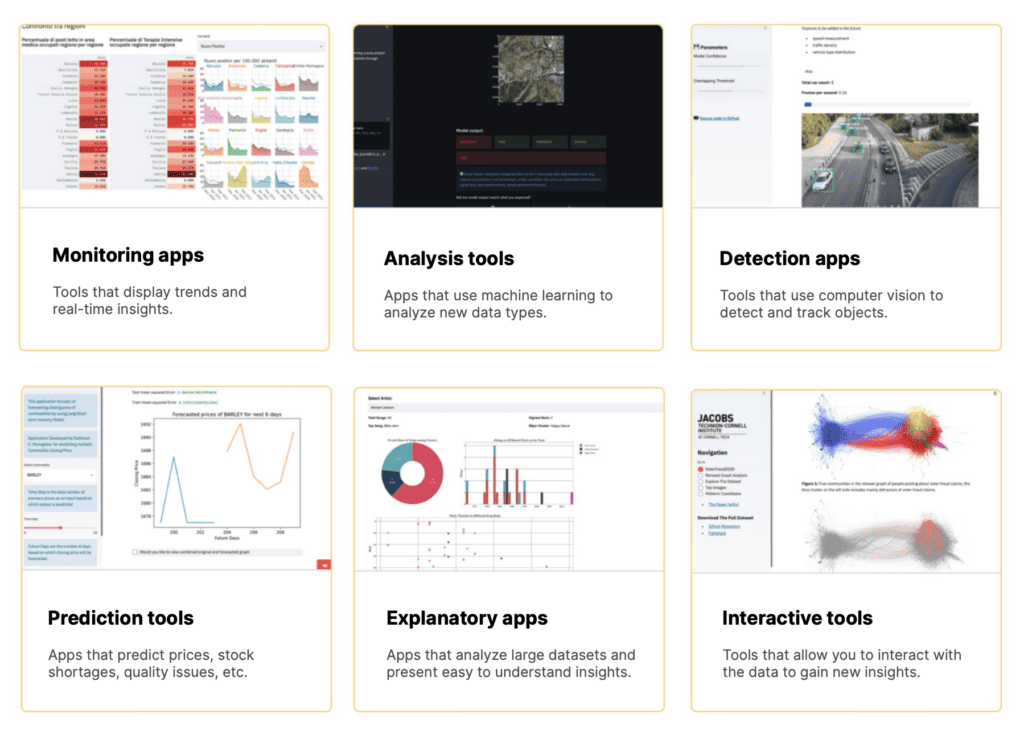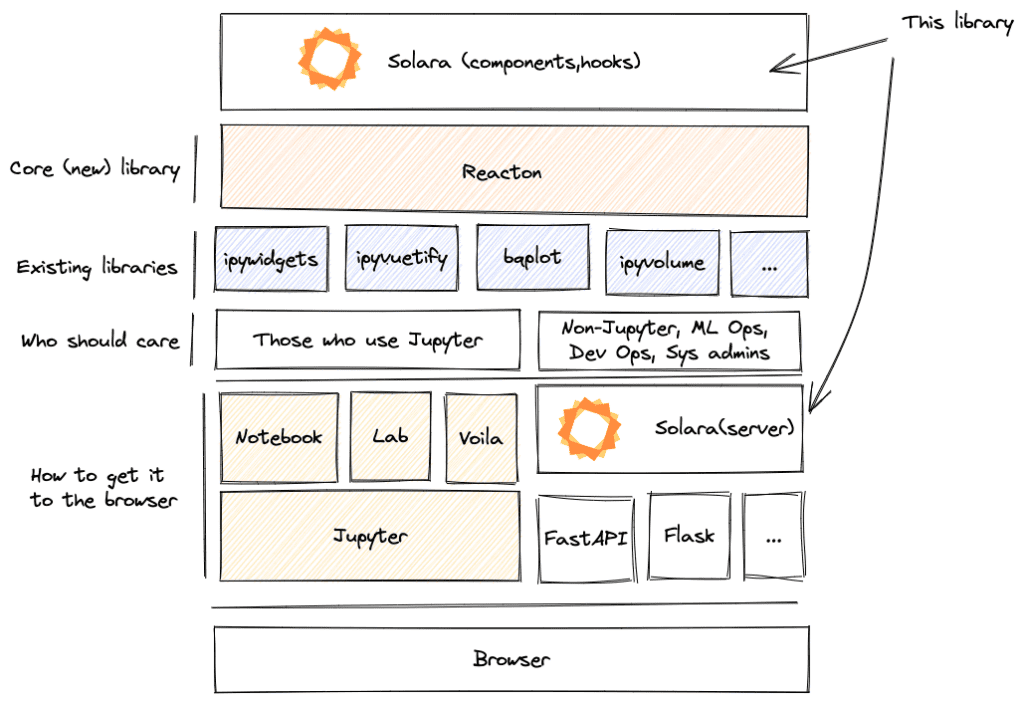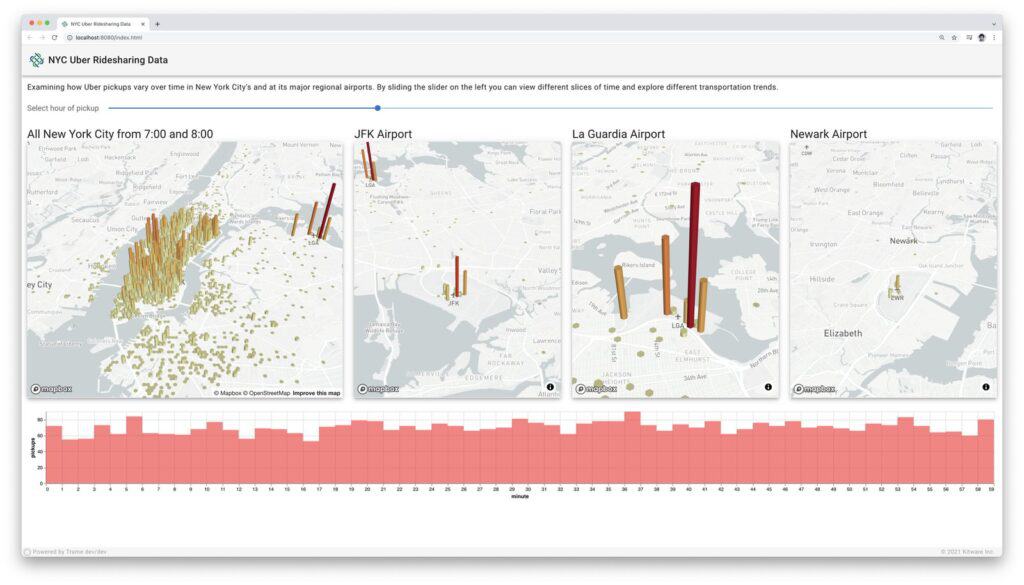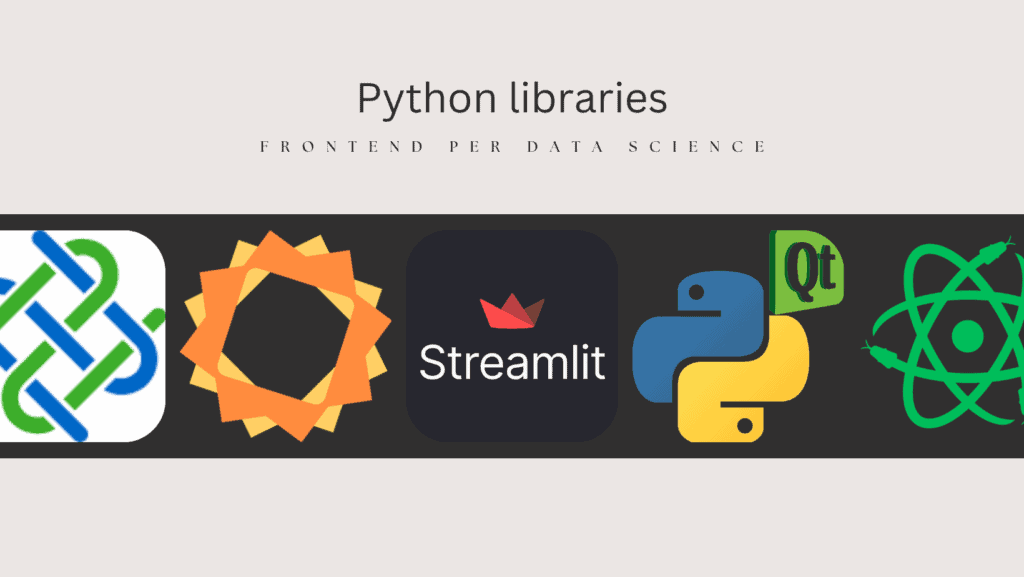In many projects, it is necessary to create visualisations of the data we collect from our applications. Developing visualisation platforms can be time-consuming, both from a design perspective, but especially from a frontend development perspective. Whether you are a Data Scientist, Data Engineer or Machine Learning Engineer, you must, therefore, know at least one frontend library. For Python developers, this most often requires knowledge of another programming language (usually javascript) in order to create user-friendly and appealing user interfaces. Nowadays, there are libraries in Python that can be very useful for speeding up the frontend development process without the need to learn a new language. You can thus create projects for everyday tasks, create dashboards for your customers and increase your skills as a full-stack developer.
In this article, we will cover five Python libraries for frontend development. When, of course, there is so much choice, you need to weigh up the advantages and disadvantages of each solution to find the one best suited to your project. We will analyse their characteristics and, finally, give some hints as to which library is the most suitable for certain projects.
Streamlit

Let us start with the most popular frontend framework for data science enthusiasts.
Streamlit is an open-source framework in Python. It allows users to create interactive data applications quickly and easily, which makes it particularly advantageous for data scientists and machine learning engineers who may not have in-depth knowledge of web development.
With Streamlit, developers can build and share attractive user interfaces and deploy templates without requiring in-depth front-end experience or knowledge. In addition to being free, the framework allows you to create shareable web applications in minutes.
If you want to create a quick prototype, a SaaS, an analysis dashboard or simply a project for friends, Streamlit is a good idea. It doesn’t take long to start working on it, there are many ready-made templates and you can complete the frontend in minutes. It is also extremely easy to share.
However, this library is not a good decision if you need to create a scalable project or one that has to deal with a large amount of data. In fact, Streamlit focuses more on simple, one-page websites (although it is now possible to create multiple web pages). In addition, its internal structure requires the execution of the entire python script for each request, which drastically increases the computational resources required and the execution time of certain tasks. Therefore, it is not advisable to create, for instance, a social network or a start-up platform with this library.
Furthermore, many users claim that Streamlit is very difficult to customise. If you want to add something new that is not present in the documentation, it will be a difficult, though not impossible challenge.
If you want to learn more about this topic, you can read one of the articles on the blog:
Solara

Solara allows you to create web applications from pure Python using ipywidgets or a React-like API on top of ipywidgets. These applications work both within Jupyter Notebook and as stand-alone web applications with frameworks such as FastAPI.
With Solara you benefit from a paradigm that promotes component-based code and simplifies state management, making the development process more efficient and applications more maintainable.
Solara gives you access to the full strength of the Python ecosystem. This means you can continue to use your favourite libraries while expanding your web development capabilities.
So, if you want to develop a large and scalable website, or some widgets for your python notebook, Solara is the best choice.
The downsides, however, are as follows: Solara is not as popular (compared, for example, to streamlit), so it will be more difficult to find an answer to a problem, or to find templates to start with. Some users also complain about the documentation being limited. Finally, it will generally be more difficult to develop, since one will have to know how to use states and handle component-based code.
Trame

Trame is an open-source platform that makes it easy to create visually stunning, interactive web applications with minimal knowledge of web development or technology. It is based on Python and leverages platforms such as VTK, ParaView and Vega to create web applications in minutes.
Trame provides a high-level framework for creating responsive and stateful web applications and can be used locally like any desktop application, but also deployed in the cloud or on-premises to access large and/or sensitive data. Trame has many built-in features that leverage existing libraries or tools such as Vuetify, Altair, Vega, Deck, VTK, ParaView and others.
Trame allows you to create interactive data processing applications with rich visualisations without having to change language or technology. The different layouts available allow you to create your own application in no time. Furthermore, it allows you to choose between server-side and client-side rendering, as well as hybrid approaches.
Thus, Trame is an excellent choice if you want to create scientific applications with interactive and complex visualisations and simulations (even in 3D!). It is cross-platform, provides many useful functions and overall looks aesthetically pleasing.
Unfortunately, there are also some negative aspects. Plots is a fairly new framework, so it does not yet have a large community. Also, it is still under development, so some problems or bugs may arise. Finally, it requires some time to go through and understand all the concepts.
ReactPy
ReactPy is a Python package for creating user interfaces without JavaScript. It allows developers to create interfaces using small, reusable components, similar to ReactJS. ReactPy interfaces can be built for various backends, such as Flask, FastAPI, Sanic, Tornado, Django, Jupyter and Plotly-Dash.
Practically everything that can be built in ReactJS can be built in ReactPy. Most of the features of React, such as state management, hooks, components and others, are already implemented in ReactPy.
So, if you are familiar with ReactJS and want to have the backend and frontend in the same language, ReactPy is the best choice. Otherwise, ReactPy is just a good library for writing multi-page websites, landing pages and other applications for which HTML/CSS/JS is usually used.
The main disadvantage of ReactPy is that it is rather new, so it does not have a large community, which means it will not have hundreds of libraries like ReactJS. In addition, it is still under development, so it is possible that some bugs may occur and some features may not be completed or may not work properly.
PyQt

PyQt is a Python binding of the cross-platform GUI toolkit, implemented as a Python plugin. It serves primarily as a powerful GUI module, seamlessly integrating the robust cross-platform Qt C++ framework with the flexible Python programming language.
It is organised into several modules, each of which is designed for specific tasks, such as QtCore for non- GUI core functionality and QtGui for GUI functionality. PyQt is widely used for graphical application development due to its modern collection of widgets and its compatibility with various operating systems, including Windows, Unix, Linux, macOS, iOS and Android.
If you need a desktop application for one of the above-mentioned operating systems, PyQt is one of the best options. It offers a large set of widgets, good customisation and follows all Python conventions, which makes it easy to use. It also supports multimedia content such as video and audio.
Unfortunately, PyQt requires some additional steps for installation, which makes it more difficult to install than other libraries. Also, if your application is not open-source, you have to pay a commercial licence. Finally, it takes some time to understand how all the widgets and functions work in order to properly create applications with PyQt.
Conclusions
We have explored five frontend frameworks written in Python, each with its own strengths and applications. In conclusion, if you need to create a quick and simple prototype that needs to handle not very large data and does not require scalability, Streamlit is your ideal partner. For enterprise-level scalability, on the other hand, Solara is the best choice. If your goal, on the other hand, is simulations and complex 3D visualisations, Trame is the ideal library. If you need to develop websites in ReactJS style, but do not want to learn javascript or typescript and delve into the complex world of ReactJS, ReactPy is the best choice. Finally, if you need to develop and deploy cross-platform desktop applications, PyQt is the favourite.


